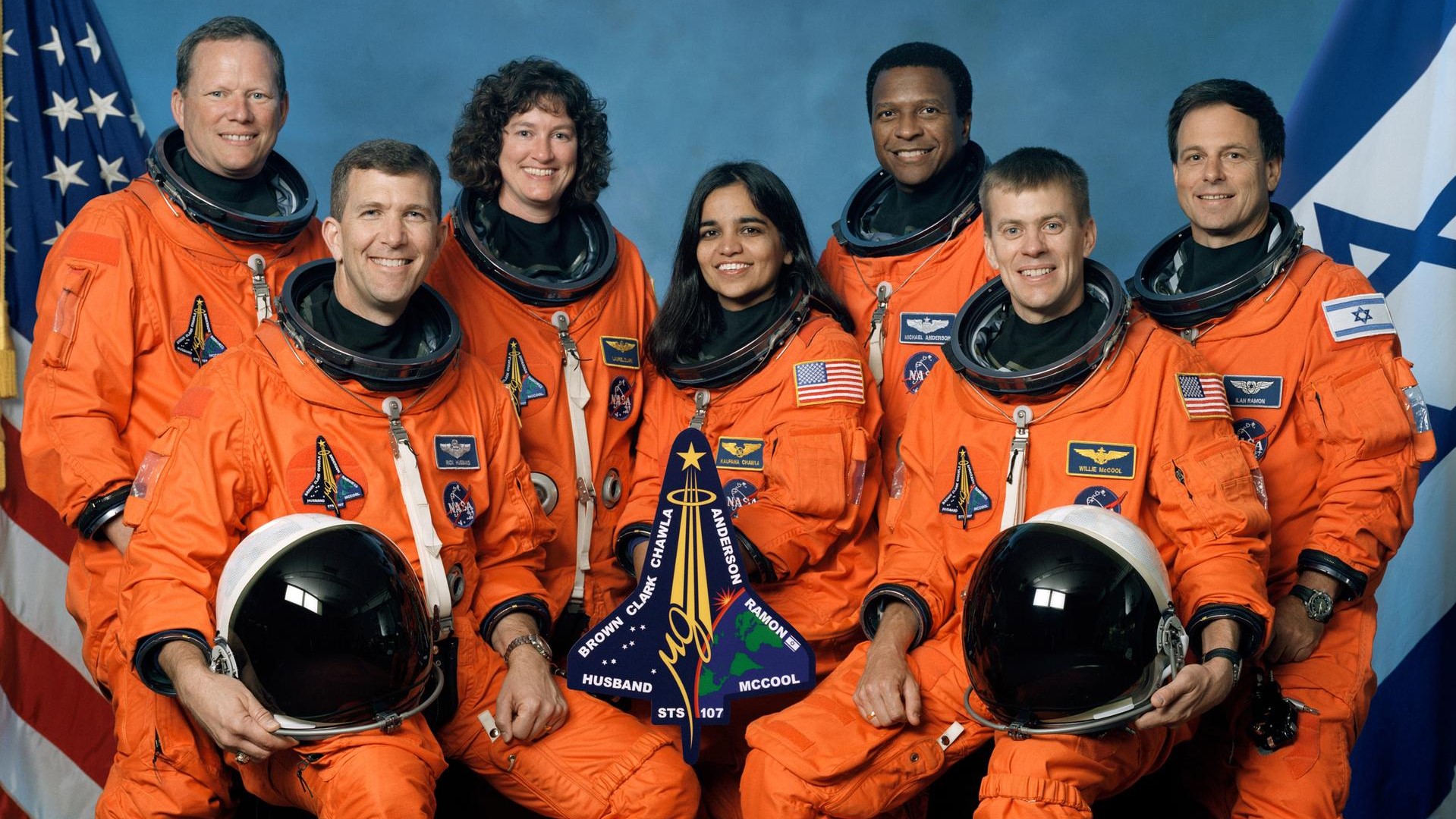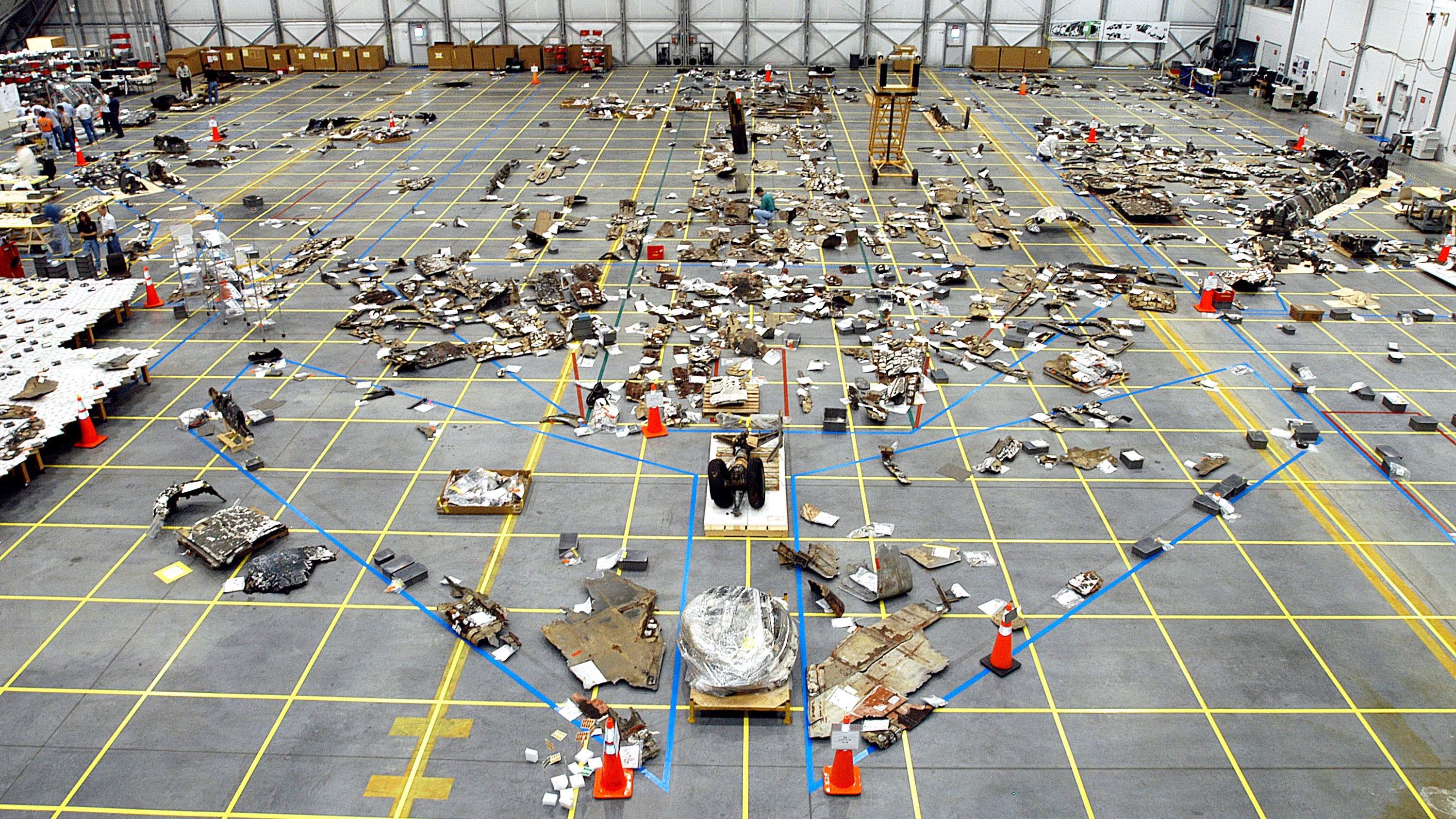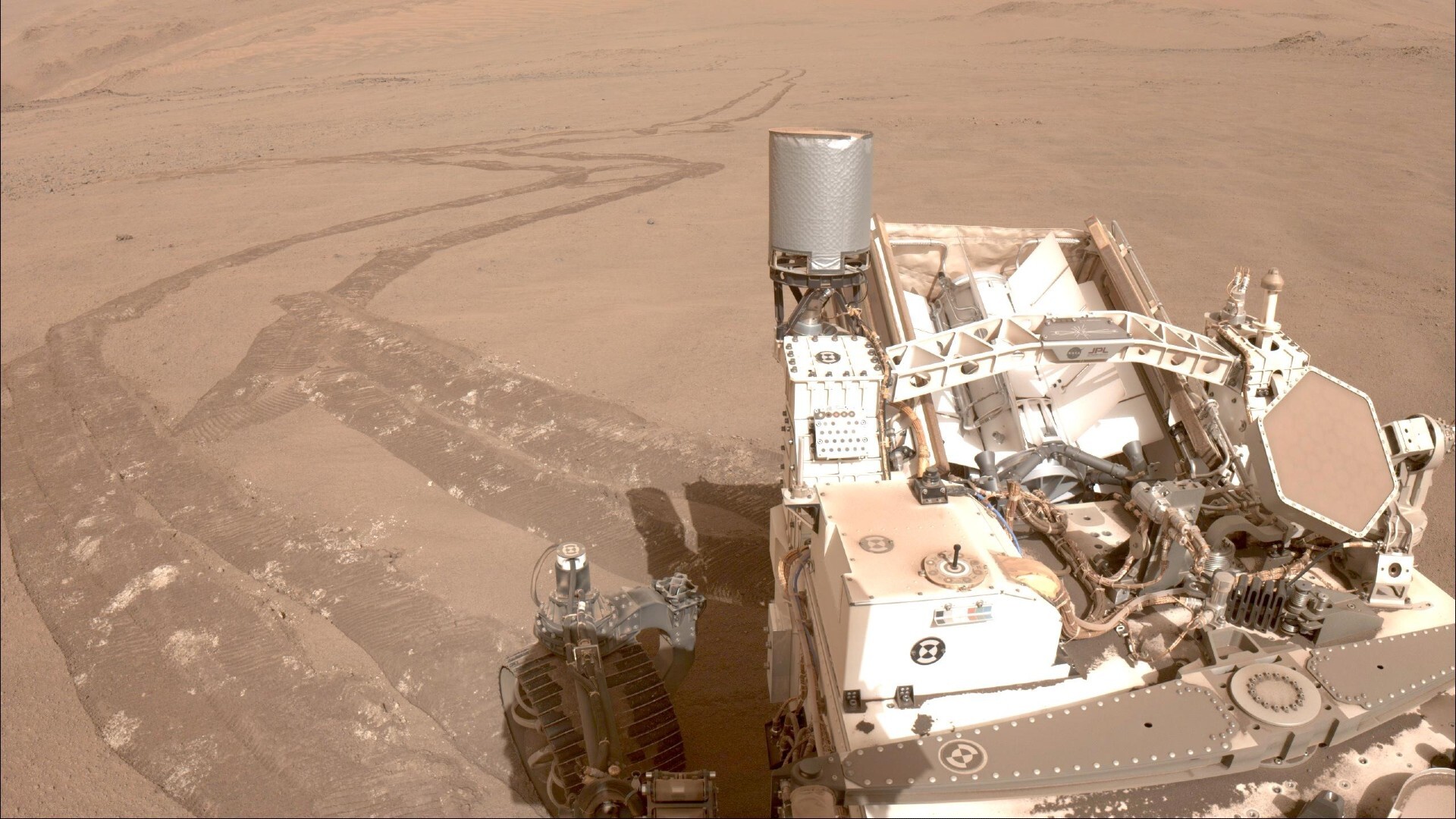20 years after Columbia shuttle tragedy, NASA pledges 'acute awareness' of astronaut safety
Seven astronauts lost their lives on space shuttle Columbia on Feb. 1, 2003, due to a series of technical and organizational problems at NASA.

It was 20 years ago today (Feb. 1) that seven astronauts lost their lives during a spaceflight.
The spacecraft Columbia broke up during the landing phase of the STS-107 mission in 2003, scattering pieces of the space shuttle across the southern United States. The agency paused shuttle flights for more than two years while investigating the causes of the incident, and only resumed full flight operations in 2006.
Several NASA astronauts shared their experiences of the tragic day during an agency town hall Jan. 26 to mark the agency's annual Day of Remembrance for fallen spaceflyers.
"I want to encourage any of you who were not here when Columbia happened, to seek out someone who was — and ask them to tell their story, how it affected them and how it affected the agency," NASA deputy administrator Pam Melroy said at the livestreamed town hall.
Melroy, a two-time space shuttle astronaut who was at the agency during the Columbia tragedy, said NASA must maintain an "acute awareness" of "why we must always focus on safety, and not pressure to launch ... why we must be rigorous in teams to make sure we're not applying groupthink to a complex issue."
Related: Columbia report faults NASA culture, government oversight
Like all spacecraft accidents, the root causes of Columbia's and its crew's demise were complex. Those causes are detailed in a six-volume report issued by the independent Columbia Accident Investigation Board (CAIB) later in 2003.
Breaking space news, the latest updates on rocket launches, skywatching events and more!
According to that board, the primary technical cause of the incident was a piece of foam insulation that fell loose from a "bipod" (shuttle attachment) region of the external fuel tank during the flight's launch on Jan. 16, striking the leading edge of Columbia's left wing. The falling foam caused a breach in the re-entry protection system needed to protect the crew as the shuttle came back into Earth's atmosphere.
Associated with that technical issue was a series of related organizational problems such as a lack of vision, immense schedule pressure for launches, budget constraints and cutbacks to the agency's workforce, CAIB investigations found.
"It is our view that complex systems almost always fail in complex ways, and we believe it would be wrong to reduce the complexities and weaknesses associated with these systems to some simple explanation," CAIB members wrote in their introduction to the first volume.
"Too often, accident investigations blame a failure only on the last step in a complex process, when a more comprehensive understanding of that process could reveal that earlier steps might be equally or even more culpable."
Related: Space shuttle Columbia's final mission (STS-107) in photos
Foam shedding had happened numerous times before during shuttle launches, even though the shuttle system wasn't designed to do it; CAIB officials suggested foam loss occurred on more than 80% of 79 missions "for which imagery was available to confirm or rule out foam loss."
During Columbia's final flight, NASA engineers knew the foam had struck the shuttle's wing and several "debris assessment" meetings were held, according to CAIB documentation based on a series of interviews and agency e-mails obtained by board members. NASA had also issued a brief request to the U.S. Department of Defense for high-resolution "spy satellite" imagery of the affected area, but rescinded it within 90 minutes, CAIB analysis determined.
"Mission managers understood that the relevant question was not whether foam posed a safety-of-flight issue — it did — but rather whether the observed foam strike contained sufficient kinetic energy to cause damage that could lead to a burn-through," CAIB wrote in the second volume of its report.
"Here, all the key managers were asking the right question and admitting the danger. They even identified [the tiles] as a critical impact zone. Yet little follow-through occurred with either the request for imagery, or the debris assessment team analysis."
Space historian John Logsdon served on CAIB and told Space.com that, in his view, several of the problems identified in the Challenger space shuttle's fatal accident of 1986, which killed seven astronauts, recurred during Columbia.
Challenger's demise resulted from an explosion during launch due to the failure of a key part in a solid rocket booster, known as an O-ring, but schedule pressure and other organizational problems played a role as well.
Logsdon recalled fellow board member and former NASA astronaut Sally Ride, who had served on the board investigating Challenger as well, telling her fellow CAIB members that she heard "echoes of Challenger" in Columbia's demise.
An entire chapter in Volume 1 of CAIB compares the various causes of the two accidents, opening with a statement saying the Columbia board saw "unfortunate similarities between the agency's performance and safety practices in both periods" prior to the two shuttle tragedies.
At NASA today, the environment surrounding crewed missions is complex in a different way, Logsdon said. The agency gives contractors for its International Space Station commercial crew program (SpaceX and Boeing) more oversight of their own spacecraft, for example. Additionally, a selection of NASA astronauts fly aboard Soyuz spacecraft that are managed by Russia's space agency, Roscosmos.
Logsdon said that as a semi-retired professor emeritus at George Washington University in Washington, D.C., not looking at day-to-day space activities, "I'm not comfortable passing judgment on the current state of the safety program." That said, Logsdon noted "common sense" would make it unlikely that a third safety incident would arise in exactly the same way as Challenger or Columbia.
NASA administrator Bill Nelson said at the town hall that the agency is committed to remaining cautious and listening to the experts. "Speak up," he told employees. "A question, even a simple question, is more forgivable than a mistake that can result in a tragedy."
Nelson himself flew on a space shuttle mission that landed less than two weeks before the Challenger disaster.
"Each of us," Nelson said, "has a responsibility to cultivate a work environment where every member of the NASA family feels empowered to voice doubt. Make your concerns heard. Communicate openly."
Follow Elizabeth Howell on Twitter @howellspace. Follow us on Twitter @Spacedotcom or Facebook.

Elizabeth Howell (she/her), Ph.D., was a staff writer in the spaceflight channel between 2022 and 2024 specializing in Canadian space news. She was contributing writer for Space.com for 10 years from 2012 to 2024. Elizabeth's reporting includes multiple exclusives with the White House, leading world coverage about a lost-and-found space tomato on the International Space Station, witnessing five human spaceflight launches on two continents, flying parabolic, working inside a spacesuit, and participating in a simulated Mars mission. Her latest book, "Why Am I Taller?" (ECW Press, 2022) is co-written with astronaut Dave Williams.


